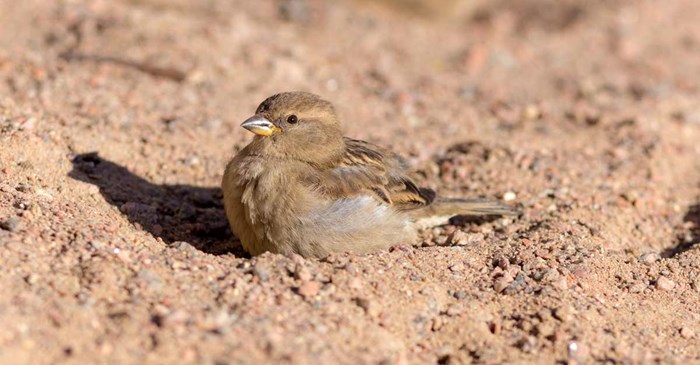When you watch birds, you may notice behaviors that are puzzling to us humans. For example, if you live near a quiet dirt road, along a gravel alley, or in an arid climate, you may see a bird kicking up a little commotion on the ground. What might not occur to you, is that It's likely taking a dust bath.
If you've never seen one, a dust bath can look rather odd, because the bird is getting down into the dust, kicking, rocking, fanning their tail feathers, flapping their wings, and fluffing their feathers.
For many songbird species, a regular dust bath is a way to condition their feathers. Not all birds do it, but it’s common in sparrow species, as well as robins, bluebirds, and wrens. Here’s a look at what dust baths do for birds.
When a bird preens, it’s distributing oil secreted by a gland throughout its plumage. This oil keeps the feathers pliable, weather-proof, and ready for flight. But this oil can build up, making their feathers greasy and matted. When they take a dust bath, particles bind to the excess oil. After flapping around in the dust, they’ll fly up to a perch to complete the routine, fluffing out their feathers to shake off the excess. The bird now sports fluffier, more flight-worthy feathers.
While some birds seem to prefer dust bathing, the practice is more common in arid areas than places where it’s easy for birds to find standing water. If you live in a drier part of the country, or if it hasn’t rained in a while, it's a good idea to pick up a birdbath and make sure it's filled with fresh, clean water.
In addition to fresh water, providing a high-quality seed is a great way to support the birds in your neighborhood. Lyric Supreme Mix offers superb value because this blend contains more than 50% seeds and nuts, the high-quality protein that birds love to eat, so you’ll know that you're offering a mix that attracts a crowd.
